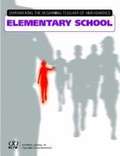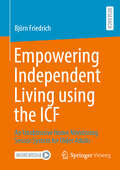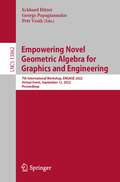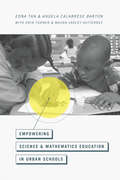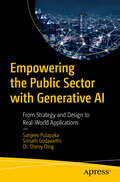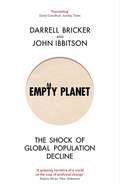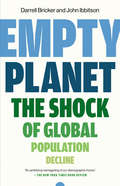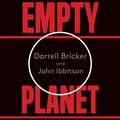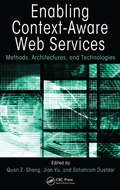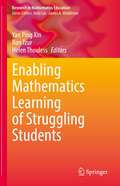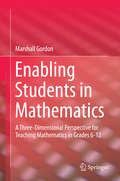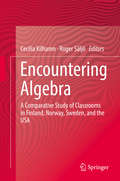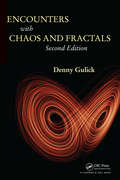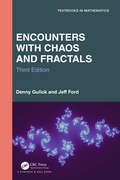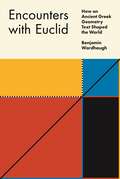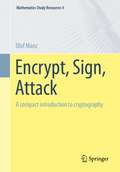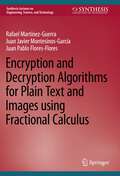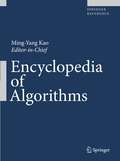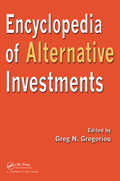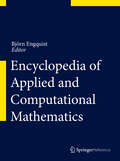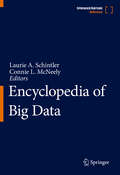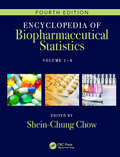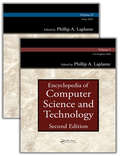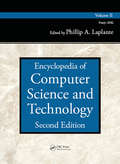- Table View
- List View
Empowering The Beginning Teacher Of Mathematics In Elementary School
by Michaele F. Chappell Jane F. Schielack Sharon Zagorski Jane SchielackThose beginning their journeys as teachers of mathematics will encounter challenges both inside and outside the classroom. These volumes have been compiled to help new teachers reach their full potential as mathematics educators, thereby improving the mathematics learning of their students. The resources in these books highlight six broad categories: professional growth, curriculum and instruction, classroom-level assessment, classroom management and organisation, equity and school and community. <p><p> The ideas and advice from experienced educators are designed to help beginning elementary school teachers maintain their students' natural interest in, and enthusiasm for, mathematics by nurturing rich mathematical thinking through talking, experimenting and sharing ideas. The book addresses classroom management issues, questioning skills, professional growth and more.
Empowering Independent Living using the ICF: An Unobtrusive Home Monitoring Sensor System for Older Adults
by Björn FriedrichFunctional decline in older adults can lead to an increased need of assistance or even moving to a nursing home. Utilising home automation, power and wearable sensors, the system developed by the author continuously keeps track of the functional status of older adults through monitoring their daily life and allows health care professionals to create individualised rehabilitation programmes based on the changes in the older adult’s functional capacity and performance in daily life. The system uses the taxonomy of the International Classification of Functioning, Disability and Health (ICF) by the World Health Organization (WHO). It links sensor data to fve ICF items from three ICF categories and measures their change over time. The system successfully passed the first pre-clinical validation step on the real-world data of the OTAGO study, a 10-month randomised pilot intervention study with 20 (pre-)frail older adults (aged ≥ 75 years). Since this research is in an early stage further clinical studies are needed to fully validate the system.
Empowering Novel Geometric Algebra for Graphics and Engineering: 7th International Workshop, ENGAGE 2022, Virtual Event, September 12, 2022, Proceedings (Lecture Notes in Computer Science #13862)
by Eckhard Hitzer George Papagiannakis Petr VasikThis book constitutes the proceedings of the Workshop Empowering Novel Geometric Algebra for Graphics and Engineering, ENGAGE 2022, held in conjunction with Computer Graphics International conference, CGI 2022, which took place virtually, in September 2022. The 10 full papers included in this volume were carefully reviewed and selected from 12 submissions. The workshop focused specifically on important aspects of geometric algebra including algebraic foundations, digitized transformations, orientation, conic fitting, protein modelling, digital twinning, and multidimensional signal processing.
Empowering Science and Mathematics Education in Urban Schools
by Edna Tan Angela Calabrese Barton Erin E. Turner Maura Varley Gutiérrez.Math and science hold powerful places in contemporary society, setting the foundations for entry into some of the most robust and highest-paying industries. However, effective math and science education is not equally available to all students, with some of the poorest students--those who would benefit most--going egregiously underserved. This ongoing problem with education highlights one of the core causes of the widening class gap. While this educational inequality can be attributed to a number of economic and political causes, in Empowering Science and Mathematics Education in Urban Communities, Angela Calabrese Barton and Edna Tan demonstrate that it is augmented by a consistent failure to integrate student history, culture, and social needs into the core curriculum. They argue that teachers and schools should create hybrid third spaces--neither classroom nor home--in which underserved students can merge their personal worlds with those of math and science. A host of examples buttress this argument: schools where these spaces have been instituted now provide students not only an immediate motivation to engage the subjects most critical to their future livelihoods but also the broader math and science literacy necessary for robust societal engagement. A unique look at a frustratingly understudied subject, Empowering Science and Mathematics Education pushes beyond the idea of teaching for social justice and into larger questions of how and why students participate in math and science.
Empowering the Public Sector with Generative AI: From Strategy and Design to Real-World Applications
by Sanjeev Pulapaka Srinath Godavarthi Sherry DingThis is your guide book to Generative AI (GenAI) and its application in addressing real-world challenges within the public sector. The book addresses a range of topics from GenAI concepts and strategy to public sector use cases, architecture patterns, and implementation best practices. With a general background in technology and the public sector, you will be able to understand the concepts in this book. The book will help you develop a deeper understanding of GenAI and learn how GenAI differs from traditional AI. You will explore best practices such as prompt engineering, and fine-tuning, and architectural patterns such as Retrieval Augmented Generation (RAG). And you will discover specific nuances, considerations, and strategies for implementation in a public sector organization. You will understand how to apply these concepts in a public sector setting and address industry-specific challenges and problems by studying a variety of use cases included in the book in the areas of content generation, chatbots, summarization, and program management. What You Will Learn GenAI concepts and how GenAI differs from traditional AI/ML Prompt engineering, fine-tuning, RAG, and customizing foundation models Strategy, methodologies, and frameworks for the public sector Public sector use cases in the areas of content generation, summarization, and chatbots, plus program management, analytics, business intelligence, and reporting Architecture and design patterns Implementation, operations, and maintenance of GenAI applications Who This Book Is For Technology and business leaders in the public sector who are new to AI/ML and are keen on exploring and harnessing the potential of Generative AI in their respective organizations.
Empty Planet: The Shock of Global Population Decline
by Darrell Bricker John Ibbitson**A SUNDAY TIMES MUST-READ**'Riveting and vitally important' - Steven Pinker'A gripping narrative of a world on the cusp of profound change' - Anjana Ahuja, New StatesmanEmpty Planet offers a radical, provocative argument that the global population will soon begin to decline, dramatically reshaping the social, political and economic landscape.For half a century, statisticians, pundits and politicians have warned that a burgeoning planetary population will soon overwhelm the earth's resources. But a growing number of experts are sounding a different kind of alarm. Rather than growing exponentially, they argue, the global population is headed for a steep decline. Throughout history, depopulation was the product of catastrophe: ice ages, plagues, the collapse of civilizations. This time, however, we're thinning ourselves deliberately, by choosing to have fewer babies than we need to replace ourselves. In much of the developed and developing world, that decline is already underway, as urbanisation, women's empowerment, and waning religiosity lead to smaller and smaller families. In Empty Planet, Ibbitson and Bricker travel from South Florida to Sao Paulo, Seoul to Nairobi, Brussels to Delhi to Beijing, drawing on a wealth of research and firsthand reporting to illustrate the dramatic consequences of this population decline - and to show us why the rest of the developing world will soon join in. They find that a smaller global population will bring with it a number of benefits: fewer workers will command higher wages; good jobs will prompt innovation; the environment will improve; the risk of famine will wane; and falling birthrates in the developing world will bring greater affluence and autonomy for women. But enormous disruption lies ahead, too. We can already see the effects in Europe and parts of Asia, as aging populations and worker shortages weaken the economy and impose crippling demands on healthcare and vital social services. There may be earth-shaking implications on a geopolitical scale as well. Empty Planet is a hugely important book for our times. Captivating and persuasive, it is a story about urbanisation, access to education and the empowerment of women to choose their own destinies. It is about the secularisation of societies and the vital role that immigration has to play in our futures.Rigorously researched and deeply compelling, Empty Planet offers a vision of a future that we can no longer prevent - but that we can shape, if we choose to.
Empty Planet: The Shock of Global Population Decline
by John Ibbitson Darrell BrickerAn award-winning journalist and leading international social researcher make the provocative argument that the global population will soon begin to decline, dramatically reshaping the social, political, and economic landscape For half a century, statisticians, pundits, and politicians have warned that a burgeoning population will soon overwhelm the earth's resources. But a growing number of experts are sounding a different alarm. Rather than continuing to increase exponentially, they argue, the global population is headed for a steep decline—and in many countries, that decline has already begun. In Empty Planet, John Ibbitson and Darrell Bricker find that a smaller global population will bring with it many benefits: fewer workers will command higher wages; the environment will improve; the risk of famine will wane; and falling birthrates in the developing world will bring greater affluence and autonomy for women. But enormous disruption lies ahead, too. We can already see the effects in Europe and parts of Asia, as aging populations and worker shortages weaken the economy and impose crippling demands on healthcare and social security. The United States and Canada are well-positioned to successfully navigate these coming demographic shifts--that is, unless growing isolationism leads us to close ourselves off just as openness becomes more critical to our survival than ever. Rigorously researched and deeply compelling, Empty Planet offers a vision of a future that we can no longer prevent--but one that we can shape, if we choose.
Empty Planet: The Shock of Global Population Decline
by John Ibbitson Darrell Bricker**A SUNDAY TIMES MUST-READ**'Riveting and vitally important' - Steven Pinker'A gripping narrative of a world on the cusp of profound change' - Anjana Ahuja, New StatesmanEmpty Planet offers a radical, provocative argument that the global population will soon begin to decline, dramatically reshaping the social, political and economic landscape.For half a century, statisticians, pundits and politicians have warned that a burgeoning planetary population will soon overwhelm the earth's resources. But a growing number of experts are sounding a different kind of alarm. Rather than growing exponentially, they argue, the global population is headed for a steep decline. Throughout history, depopulation was the product of catastrophe: ice ages, plagues, the collapse of civilizations. This time, however, we're thinning ourselves deliberately, by choosing to have fewer babies than we need to replace ourselves. In much of the developed and developing world, that decline is already underway, as urbanisation, women's empowerment, and waning religiosity lead to smaller and smaller families. In Empty Planet, Ibbitson and Bricker travel from South Florida to Sao Paulo, Seoul to Nairobi, Brussels to Delhi to Beijing, drawing on a wealth of research and firsthand reporting to illustrate the dramatic consequences of this population decline - and to show us why the rest of the developing world will soon join in. They find that a smaller global population will bring with it a number of benefits: fewer workers will command higher wages; good jobs will prompt innovation; the environment will improve; the risk of famine will wane; and falling birthrates in the developing world will bring greater affluence and autonomy for women. But enormous disruption lies ahead, too. We can already see the effects in Europe and parts of Asia, as aging populations and worker shortages weaken the economy and impose crippling demands on healthcare and vital social services. There may be earth-shaking implications on a geopolitical scale as well. Empty Planet is a hugely important book for our times. Captivating and persuasive, it is a story about urbanisation, access to education and the empowerment of women to choose their own destinies. It is about the secularisation of societies and the vital role that immigration has to play in our futures.Rigorously researched and deeply compelling, Empty Planet offers a vision of a future that we can no longer prevent - but that we can shape, if we choose to.
Empty Planet: The Shock of Global Population Decline
by John Ibbitson Darrell BrickerFrom the authors of the bestselling The Big Shift, a provocative argument that the global population will soon begin to decline, dramatically reshaping the social, political, and economic landscape. For half a century, statisticians, pundits, and politicians have warned that a burgeoning planetary population will soon overwhelm the earth's resources. But a growing number of experts are sounding a different kind of alarm. Rather than growing exponentially, they argue, the global population is headed for a steep decline. Throughout history, depopulation was the product of catastrophe: ice ages, plagues, the collapse of civilizations. This time, however, we're thinning ourselves deliberately, by choosing to have fewer babies than we need to replace ourselves. In much of the developed and developing world, that decline is already underway, as urbanization, women's empowerment, and waning religiosity lead to smaller and smaller families. In Empty Planet, Ibbitson and Bricker travel from South Florida to Sao Paulo, Seoul to Nairobi, Brussels to Delhi to Beijing, drawing on a wealth of research and firsthand reporting to illustrate the dramatic consequences of this population decline--and to show us why the rest of the developing world will soon join in. They find that a smaller global population will bring with it a number of benefits: fewer workers will command higher wages; good jobs will prompt innovation; the environment will improve; the risk of famine will wane; and falling birthrates in the developing world will bring greater affluence and autonomy for women. But enormous disruption lies ahead, too. We can already see the effects in Europe and parts of Asia, as aging populations and worker shortages weaken the economy and impose crippling demands on healthcare and social security. The United States is well-positioned to successfully navigate these coming demographic shifts--that is, unless growing isolationism and anti-immigrant backlash lead us to close ourselves off just as openness becomes more critical to our survival than ever before. Rigorously researched and deeply compelling, Empty Planet offers a vision of a future that we can no longer prevent--but one that we can shape, if we choose.
Enabling Context-Aware Web Services: Methods, Architectures, and Technologies
by Quan Z. Sheng Jian Yu Schahram DustdarWith recent advances in radio-frequency identification (RFID) technology, sensor networks, and enhanced Web services, the original World Wide Web is continuing its evolution into what is being called the Web of Things and Services. Such a Web will support an ultimately interactive environment where everyday physical objects such as buildings, sidew
Enabling Mathematics Learning of Struggling Students (Research in Mathematics Education)
by Yan Ping Xin Ron Tzur Helen ThoulessThis book provides prospective and practicing teachers with research insights into the mathematical difficulties of students with learning disabilities and classroom practices that address these difficulties. This linkage between research and practice celebrates teachers as learners of their own students’ mathematical thinking, thus contributing an alternative view of mathematical progression in which students are taught conceptually. The research-based volume presents a unique collaboration among researchers in special education, psychology, and mathematics education from around the world. It reflects an ongoing work by members of the International Group for the Psychology of Mathematics Education (PME) and the North American Chapter of the PME Working Groups. The authors of chapters in this book, who have been collaborating extensively over the past 7 years, are from Australia, Canada, the United Kingdom, and the United States.
Enabling Students in Mathematics
by Marshall GordonThis book addresses the cognitive, social, and psychological dimensions that shape students' mathematics experience to help students become more capable, cooperative, and confident in the process of engaging mathematics. In these ways they can have a more valuable and enjoyable mathematics experience, and become more valued participants in society. The book focuses on the mathematics classroom for students grades six to twelve and how students can become more successful mathematical thinkers, in addition to how the curriculum could be presented so as to provide a more engaging mathematics experience.
Encountering Algebra: A Comparative Study of Classrooms in Finland, Norway, Sweden, and the USA
by Cecilia Kilhamn Roger SäljöThe book reports a comparative research project about algebra teaching and learning in four countries. Algebra is a central topic of learning across the world, and it is well-known that it represents a hurdle for many students. The book presents analyses built on extensive video-recordings of classrooms documenting the first introduction to symbolic algebra (students aged 12 to 14). While the content addressed in all classrooms is variables, expressions and equations, the teaching approaches are diverse. The chapters bring the reader into different algebra classrooms, discussing issues such as mathematization and social norms, the role of mediating tools and designed examples, and teacher beliefs. By comparing classrooms, new insights are generated about how students understand the algebraic content, how teachers instruct, and how both parties deal with difficulties in learning elementary algebra. The book also describes a research methodology using video in search of taken-for-granted aspects of algebra lessons.
Encounters with Chaos and Fractals (Textbooks in Mathematics)
by Denny GulickRevised and updated, this second edition provides an accessible introduction to both chaotic dynamics and fractal geometry for readers with a calculus background. This edition contains new and expanded material on fractals that illustrates how to obtain computer renderings of them and covers Julia and Mandelbrot sets. It also includes a substantial number of new exercises at the end of each section and MATLAB programs in the appendix, with selected solutions at the back of the book.
Encounters with Chaos and Fractals (Textbooks in Mathematics)
by Denny Gulick Jeff FordEncounters with Chaos and Fractals, Third Edition provides an accessible introduction to chaotic dynamics and fractal geometry. It incorporates important mathematical concepts and backs up the definitions and results with motivation, examples, and applications. The Third Edition updates this classic book for a modern audience. New applications on contemporary topics, like data science and mathematical modelling, appear throughout. Coding activities are transitioned to open-source programming languages, including Python. The text begins with examples of mathematical behavior exhibited by chaotic systems, first in one dimension and then in two and three dimensions. Focusing on fractal geometry, the authors introduce famous infinitely complicated fractals. How to obtain computer renditions of them are explained. The book concludes with Julia sets and the Mandelbrot set. The Third Edition includes: v More coding activities included in each section. The code is expanded to include pseudo-code, with specific examples in MATLAB (or it’s open-source cousin Octave) and Python. v Many more and updated exercises from previous editions. v Proof writing exercises for a more theoretical course. v Sections revised to include historical context. v Short sections added to explain applied problems developing the mathematics. This edition reveals how these ideas are continuing to be applied in the 21st century, while connecting to the long and winding history of dynamical systems. The primary focus is the beauty and diversity of these ideas. Offering more than enough material for a one-semester course, the authors show how these subjects continue to grow within mathematics and in many other disciplines.
Encounters with Euclid: How an Ancient Greek Geometry Text Shaped the World
by Benjamin WardhaughA sweeping cultural history of one of the most influential mathematical books ever writtenEuclid's Elements of Geometry is one of the fountainheads of mathematics—and of culture. Written around 300 BCE, it has traveled widely across the centuries, generating countless new ideas and inspiring such figures as Isaac Newton, Bertrand Russell, Abraham Lincoln, and Albert Einstein. Encounters with Euclid tells the story of this incomparable mathematical masterpiece, taking readers from its origins in the ancient world to its continuing influence today.In this lively and informative book, Benjamin Wardhaugh explains how Euclid’s text journeyed from antiquity to the Renaissance, introducing some of the many readers, copyists, and editors who left their mark on the Elements before handing it on. He shows how some read the book as a work of philosophy, while others viewed it as a practical guide to life. He examines the many different contexts in which Euclid's book and his geometry were put to use, from the Neoplatonic school at Athens and the artisans' studios of medieval Baghdad to the Jesuit mission in China and the workshops of Restoration London. Wardhaugh shows how the Elements inspired ideas in theology, art, and music, and how the book has acquired new relevance to the strange geometries of dark matter and curved space.Encounters with Euclid traces the life and afterlives of one of the most remarkable works of mathematics ever written, revealing its lasting role in the timeless search for order and reason in an unruly world.
Encrypt, Sign, Attack: A compact introduction to cryptography (Mathematics Study Resources #4)
by Olaf ManzThis book explains compactly, without theoretical superstructure and with as little mathematical formalism as possible, the essential concepts in the encryption of messages and data worthy of protection. The focus is on the description of the historically and practically important cipher, signature and authentication methods. Both symmetric encryption and public-key ciphers are discussed. In each case, the strategies used to attack and attempt to "crack" encryption are also discussed. Special emphasis is placed on the practical use of ciphers, especially in the everyday environment. The book is suitable for working groups at STEM schools and STEM teacher training, for introductory courses at universities as well as for interested students and adults.
Encryption and Decryption Algorithms for Plain Text and Images using Fractional Calculus (Synthesis Lectures on Engineering, Science, and Technology)
by Rafael Martínez-Guerra Juan Javier Montesinos-García Juan Pablo Flores-FloresThis book offers an alternative for encrypting and decrypting messages using objects called integer and fractional-order estimators or observers, by means of security codes. The authors first establish the class of observers capable of carrying out this work. Then, the type of observers to treat either the integer or fractional order type and their main characteristics is mentioned. The book also presents an essential property of some systems such as Liouville, which is vital for the encryption and decryption of messages in integer and fractional order nonlinear systems by using the synchronization property of chaotic systems. Finally, it addresses some logistic maps such as Mandelbrot sets including Julia and fractal sets, taking advantage of their characteristics to encrypt or recover messages.
Encyclopedia of Algorithms
by Ming-Yang KaoOne of Springer's renowned Major Reference Works, this awesome achievement provides a comprehensive set of solutions to important algorithmic problems for students and researchers interested in quickly locating useful information. This first edition of the reference focuses on high-impact solutions from the most recent decade, while later editions will widen the scope of the work. All entries have been written by experts, while links to Internet sites that outline their research work are provided. The entries have all been peer-reviewed. This defining reference is published both in print and on line.
Encyclopedia of Alternative Investments
by Greg N. GregoriouA pioneering reference essential in any financial library, the Encyclopedia of Alternative Investments is the most authoritative source on alternative investments for students, researchers, and practitioners in this area. Containing 545 entries, the encyclopedia focuses on hedge funds, managed futures, commodities, and venture capital. It features
Encyclopedia of Applied and Computational Mathematics
by Björn EngquistEACM is a comprehensive reference work covering the vast field of applied and computational mathematics. Applied mathematics itself accounts for at least 60 per cent of mathematics, and the emphasis on computation reflects the current and constantly growing importance of computational methods in all areas of applications. EACM emphasizes the strong links of applied mathematics with major areas of science, such as physics, chemistry, biology, and computer science, as well as specific fields like atmospheric ocean science. In addition, the mathematical input to modern engineering and technology form another core component of EACM.
Encyclopedia of Big Data
by Laurie A. Schintler Connie L. McNeelyThis encyclopedia will be an essential resource for our times, reflecting the fact that we currently are living in an expanding data-driven world. Technological advancements and other related trends are contributing to the production of an astoundingly large and exponentially increasing collection of data and information, referred to in popular vernacular as “Big Data.” Social media and crowdsourcing platforms and various applications ― “apps” ― are producing reams of information from the instantaneous transactions and input of millions and millions of people around the globe. The Internet-of-Things (IoT), which is expected to comprise tens of billions of objects by the end of this decade, is actively sensing real-time intelligence on nearly every aspect of our lives and environment. The Global Positioning System (GPS) and other location-aware technologies are producing data that is specific down to particular latitude and longitude coordinates and seconds of the day. Large-scale instruments, such as the Large Hadron Collider (LHC), are collecting massive amounts of data on our planet and even distant corners of the visible universe. Digitization is being used to convert large collections of documents from print to digital format, giving rise to large archives of unstructured data. Innovations in technology, in the areas of Cloud and molecular computing, Artificial Intelligence/Machine Learning, and Natural Language Processing (NLP), to name only a few, also are greatly expanding our capacity to store, manage, and process Big Data. In this context, the Encyclopedia of Big Data is being offered in recognition of a world that is rapidly moving from gigabytes to terabytes to petabytes and beyond. While indeed large data sets have long been around and in use in a variety of fields, the era of Big Data in which we now live departs from the past in a number of key respects and with this departure comes a fresh set of challenges and opportunities that cut across and affect multiple sectors and disciplines, and the public at large. With expanded analytical capacities at hand, Big Data is now being used for scientific inquiry and experimentation in nearly every (if not all) disciplines, from the social sciences to the humanities to the natural sciences, and more. Moreover, the use of Big Data has been well established beyond the Ivory Tower. In today’s economy, businesses simply cannot be competitive without engaging Big Data in one way or another in support of operations, management, planning, or simply basic hiring decisions. In all levels of government, Big Data is being used to engage citizens and to guide policy making in pursuit of the interests of the public and society in general. Moreover, the changing nature of Big Data also raises new issues and concerns related to, for example, privacy, liability, security, access, and even the veracity of the data itself.Given the complex issues attending Big Data, there is a real need for a reference book that covers the subject from a multi-disciplinary, cross-sectoral, comprehensive, and international perspective. The Encyclopedia of Big Data will address this need and will be the first of such reference books to do so. Featuring some 500 entries, from "Access" to "Zillow," the Encyclopedia will serve as a fundamental resource for researchers and students, for decision makers and leaders, and for business analysts and purveyors. Developed for those in academia, industry, and government, and others with a general interest in Big Data, the encyclopedia will be aimed especially at those involved in its collection, analysis, and use. Ultimately, the Encyclopedia of Big Data will provide a common platform and language covering the breadth and depth of the topic for different segments, sectors, and disciplines.
Encyclopedia of Biopharmaceutical Statistics - Four Volume Set
by Shein-Chung ChowSince the publication of the first edition in 2000, there has been an explosive growth of literature in biopharmaceutical research and development of new medicines. This encyclopedia (1) provides a comprehensive and unified presentation of designs and analyses used at different stages of the drug development process, (2) gives a well-balanced summary of current regulatory requirements, and (3) describes recently developed statistical methods in the pharmaceutical sciences. Features of the Fourth Edition: 1. 78 new and revised entries have been added for a total of 308 chapters and a fourth volume has been added to encompass the increased number of chapters. 2. Revised and updated entries reflect changes and recent developments in regulatory requirements for the drug review/approval process and statistical designs and methodologies. 3. Additional topics include multiple-stage adaptive trial design in clinical research, translational medicine, design and analysis of biosimilar drug development, big data analytics, and real world evidence for clinical research and development. 4. A table of contents organized by stages of biopharmaceutical development provides easy access to relevant topics. About the Editor: Shein-Chung Chow, Ph.D. is currently an Associate Director, Office of Biostatistics, U.S. Food and Drug Administration (FDA). Dr. Chow is an Adjunct Professor at Duke University School of Medicine, as well as Adjunct Professor at Duke-NUS, Singapore and North Carolina State University. Dr. Chow is the Editor-in-Chief of the Journal of Biopharmaceutical Statistics and the Chapman & Hall/CRC Biostatistics Book Series and the author of 28 books and over 300 methodology papers. He was elected Fellow of the American Statistical Association in 1995.
Encyclopedia of Computer Science and Technology
by Phillip A. LaplanteWith breadth and depth of coverage, the Encyclopedia of Computer Science and Technology, Second Edition has a multi-disciplinary scope, drawing together comprehensive coverage of the inter-related aspects of computer science and technology. The topics covered in this encyclopedia include: General and reference Hardware Computer systems organization Networks Software and its engineering Theory of computation Mathematics of computing Information systems Security and privacy Human-centered computing Computing methodologies Applied computing Professional issues Leading figures in the history of computer science The encyclopedia is structured according to the ACM Computing Classification System (CCS), first published in 1988 but subsequently revised in 2012. This classification system is the most comprehensive and is considered the de facto ontological framework for the computing field. The encyclopedia brings together the information and historical context that students, practicing professionals, researchers, and academicians need to have a strong and solid foundation in all aspects of computer science and technology.
Encyclopedia of Computer Science and Technology Volume II
by Phillip A. LaplanteThis book covers all aspects of computer science, engineering, and technology. It includes computer scientists, computer engineers computing professionals, managers, software professionals, and other technology professionals.
